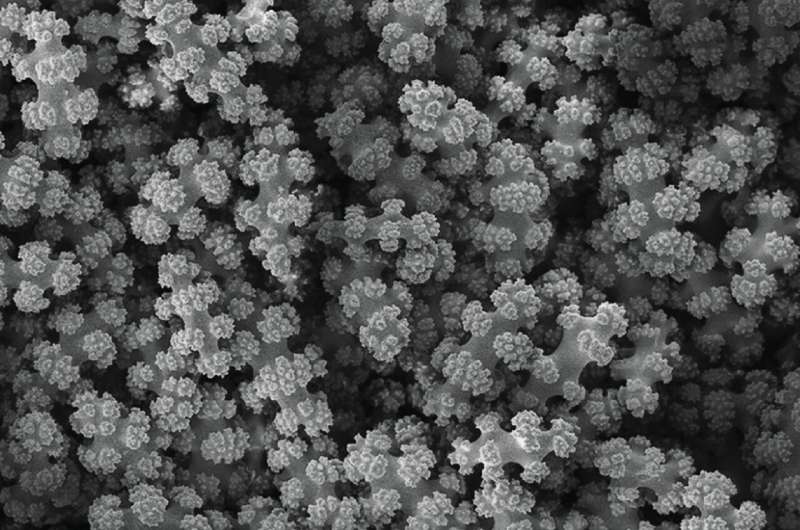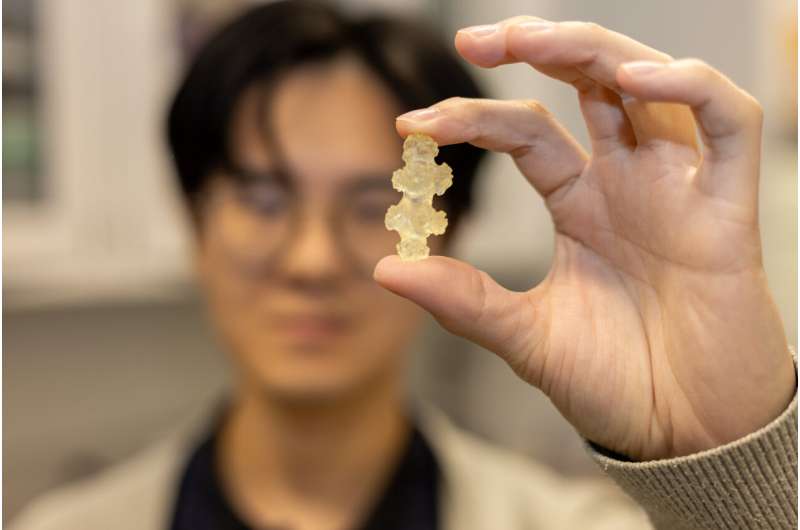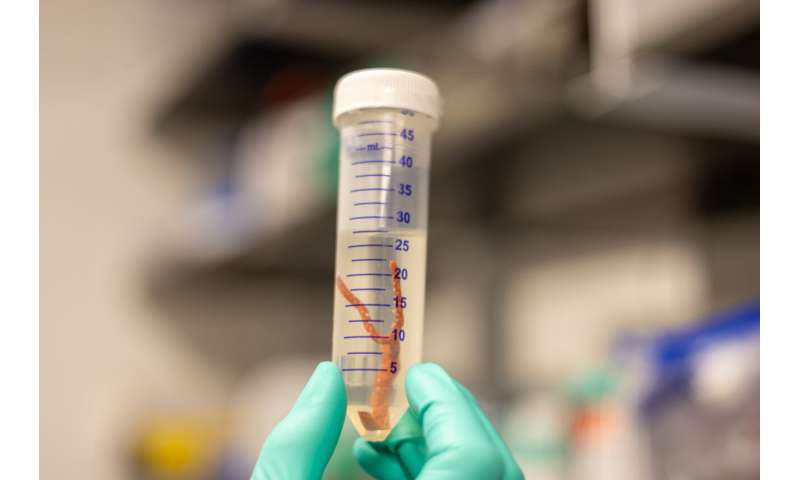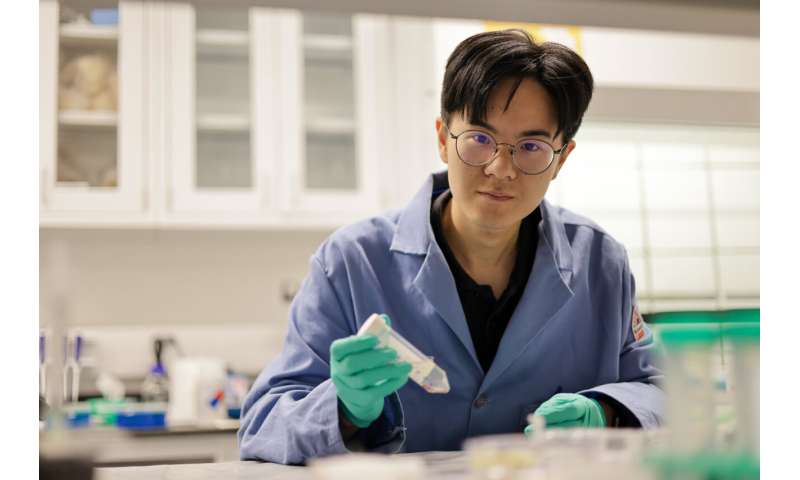Touch the branches of Leptogorgia chilensis, a soft coral found along the Pacific coast from California to Chile, and its flexible arms stiffen. Penn Engineers have discovered the mechanism underlying this astonishing ability, one that could advance fields as varied as medicine, robotics and manufacturing.
In a paper in Proceedings of the National Academy of Sciences, a group led by Ling Li, Associate Professor in Materials Science and Engineering and in Mechanical Engineering and Applied Mechanics, describes how the coral’s skeleton—made of millions of mineral particles suspended in a gelatinous matrix—compacts itself to ward off danger.
“It’s almost like a traffic jam,” says Li. “When stimulated, the coral’s tissues expel water, shrinking the gel and squeezing the particles closer together until they jam in place.”

Physicists have long studied this phenomenon, known as “granular jamming,” by manipulating grainy substances like sand and coffee grounds, but this marks the first time granular jamming based on hard particles has been observed in a living organism.
“Imagine being able to adjust the stiffness of a surgical instrument or robotic arm,” says Chenhao Hu, a doctoral student in Li’s lab and the paper’s first author. “In this coral’s skeleton, nature has created an incredible material whose principles we can adapt for human use.”
Learning from nature
For years, Li’s lab has studied the skeletons of undersea creatures, on the motivation that uncovering the basis of their material properties will lead to advances in engineering.

“They’re basically made of chalk,” he says, referring to calcium carbonate, the same cheap and plentiful white powder that forms eggshells, sticks of chalk, marble, limestone and pearls. “What gives their skeletons interesting properties is how the calcium carbonate is structured and organized.”
While marine biologists recognized long ago that soft corals like L. chilensis have skeletons containing granular particles, the grains’ shapes had primarily been used to classify different species. “Limited work has focused on the functional properties of the shapes themselves, particularly from the granular jamming point of view,” says Li.

Finding the right shape
Past research has recognized the potential of granular jamming in fields like manufacturing—one group developed a robotic grabber arm whose sand-filled “hand” envelops complex objects then stiffens to pick them up—but has relied on a few basic grain shapes.
“It’s hard to find the right shape,” says Hu. “They need to jam when they’re close together, which requires friction and interlocking, but still separate easily into a relaxed state.”
Because of their varied geometry, sand and coffee grounds make studying the mechanics of the process challenging, while easy-to-manufacture spheres frequently slide past one another due to a lack of friction.
In a sense, nature provides a shortcut: if the Penn researchers could characterize the mineral particles, or sclerites, in L. chilensis, that might point to a novel, and perhaps better, shape for human systems that rely on granular jamming.
-

A researcher holds a sample of this soft coral, found on the Pacific Coast. Credit: Bella Ciervo
-

Doctoral student and first author Chenhao Hu spent years collaborating with senior author and Associate Professor Ling Li to uncover the mechanism behind this coral’s unique ability to tune its skeleton’s stiffness. Credit: Bella Ciervo
Measuring the skeletons
Measuring about a tenth of a millimeter in size, the particles are somewhat cylindrical, like a rod studded with branching outgrowths at regular intervals. “Once the sclerites get close enough to their neighbors, their branches jam together, holding them in place,” explains Hu.
The researchers explored the material’s properties with advanced imaging techniques, computational modeling, and by poking and prodding preserved samples of the coral.
“When we applied force to the samples,” says Hu, “the material system initially shrank, occupying less volume because the particles were closer together.”
Inspired by nature
Ultimately, the researchers say, the paper points toward the benefits of studying nature to find new materials. “We just studied one coral species,” points out Li. “But there are many other soft coral species out there, which use different sclerite shapes, with potentially different properties.”
In the future, the skeleton of L. chilensis could serve as a point of comparison for other natural systems and inspire human engineers.
“There are so many situations where we might want to selectively tune the stiffness of a material,” says Li. “In this coral, nature has given us a blueprint we can follow.”
More information:
Li, Ling, Mineralized sclerites in the gorgonian coral Leptogorgia chilensis as a natural jamming system, Proceedings of the National Academy of Sciences (2025). DOI: 10.1073/pnas.2504541122. doi.org/10.1073/pnas.2504541122
Provided by
University of Pennsylvania
Citation:
Discovery of how a coral stiffens its skeleton on demand opens new directions for bio-inspired engineering (2025, October 27)
retrieved 27 October 2025
from https://phys.org/news/2025-10-discovery-coral-stiffens-skeleton-demand.html
This document is subject to copyright. Apart from any fair dealing for the purpose of private study or research, no
part may be reproduced without the written permission. The content is provided for information purposes only.





